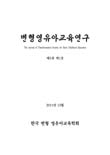학술논문
Comparison of Relative Thickness of the Iliotibial Band Following Four Self-Stretching Exercises
이용수 33
- 영문명
- 발행기관
- 한국전문물리치료학회
- 저자명
- Hyun-sook Kim Tae-lim Yoon
- 간행물 정보
- 『한국전문물리치료학회지』한국전문물리치료학회지 제19권 제4호, 24~31쪽, 전체 8쪽
- 주제분류
- 의약학 > 의학일반
- 파일형태
- 발행일자
- 2012.10.31
4,000원
구매일시로부터 72시간 이내에 다운로드 가능합니다.
이 학술논문 정보는 (주)교보문고와 각 발행기관 사이에 저작물 이용 계약이 체결된 것으로, 교보문고를 통해 제공되고 있습니다.

국문 초록
영문 초록
The aim of this study was to investigate the effectiveness of self-stretching exercises for iliotibial band (ITB) (Side-lying; right hip and knee were flexed to support the pelvis while left hip was extended and adducted, Standing A; side-bending of the trunk on standing with crossed leg, Standing B; same as Standing A, except the hands were clasped overhead and shifted right side, and Standing C; same as Standing B, except moving the arms diagonally downward) to help determine the most effective self-stretching method to stretch ITB. Twenty-one healthy subjects who do not have ITB shortness from Yonsei University (14 men and 7 women) between the ages of 18 to 28 years voluntarily participated. Ultrasound was performed to measure the thickness of the ITB between the long axis of the ITB and the level parallel to the lateral femoral epicondyle during four self-stretching exercises. All data were found to approximate a normal distribution. We used a one-way repeated-measures analysis of variance (ANOVA) to compare the thickness of the ITB among all self-stretching exercises. The level of significance was set at α=.05. The ANOVA was followed by Bonferroni’s correction. The overall mean of ITB thickness was 1.14±.4 ㎜ (± standard deviation) in resting status. The change in the ITB thickness in percentages between the tested position of each self-stretching exercises and resting status was
significant (p<.05) (Side-lying 26.62±10.18% with 95% confidence interval [CI]=21.99~31.25%; Standing A 29.46±16.19% with 95% CI=22.09~36.84%; Standing B 44.06±14.82% with 95% CI=37.31~50.81%; Standing C 53.76±12.1% with 95% CI=48.25~59.29%). Results indicated significant differences among four self-stretching exercises except Side-lying versus Standing A (p<.01). Based on these findings, the Standing C self-stretching exercise was the most effective in stretching the ITB thickness among four types of ITB self-stretching exercises. Additionally, the Side-lying self-stretching exercise using gravity to stretch the ITB is recommended as a low-load (low-intensity), long-duration stretch.
목차
Abstract
Introduction
Methods
Result
Discussion
Conclusion
References
해당간행물 수록 논문
- Comparisons of Trunk Muscle Activity During Arm Lift in Prone and Standing Positions With and Without Abdominal Drawing-in Maneuver
- Intra-Rater Test-Retest Reliability of Ely’s Test Using Smartphone in Patients With Lumbar Extension-Rotation Syndrome
- Immediate Effects of Soft Tissue Massage on Posterior Shoulder Muscle Tightness: A Preliminary Study
- Comparison of Relative Thickness of the Iliotibial Band Following Four Self-Stretching Exercises
- Effects of Tensor Fasciae Latae-Iliotibial Band Self-Stretching on Lumbopelvic Movement Patterns During Active Prone Hip Lateral Rotation in Subjects With Lumbar Extension Rotation Syndrome
- Comparison of Femoral Anteversion Angle and Determination of Reliability Measured at Three Different Anatomical References of the Tibial Crest During the Trochanteric Prominence Angle Test
- Effects of 6-Week Self-Scapular Upward Rotation Exercise on Downward Pulling Tension in Subjects With Scapular Downward Rotation Syndrome
- Electromyographic Analysis of Thoracic and Lumbar Erector Spinae Activity Using the Abdominal Drawing-in Maneuver and Chin Tuck During Prone Thoracic Extension Exercises
- The Effectiveness of the Use of Custom-Made Foot Orthotics on Temporal-Spatial Gait Parameters in Children With Spastic Cerebral Palsy
참고문헌
관련논문
의약학 > 의학일반분야 BEST
- 중증정신질환자가 이용하는 지역사회 정신건강서비스에 대한 체계적 고찰
- 대학생의 소셜 미디어에 대한 과도한 이용과 중독이 수면의 질에 미치는 영향
- 인지행동치료가 조현병 환자의 자아존중감에 미치는 영향에 대한 체계적 고찰
의약학 > 의학일반분야 NEW
- Exploring the Reliability and Validity of Smart Insoles in Gait Parameter Measurement: A Cross-sectional Study
- Synergistic Effects of Non-Invasive Brain Stimulation and Mindfulness Training on Pain and Self-Reported Mindfulness in Patients with Chronic Pain
- Scoping Review of Depth-Sensing Technologies for Balance and Gait Assessments in Older Adults: Implications for Fall Prevention in Rehabilitation
최근 이용한 논문
교보eBook 첫 방문을 환영 합니다!

신규가입 혜택 지급이 완료 되었습니다.
바로 사용 가능한 교보e캐시 1,000원 (유효기간 7일)
지금 바로 교보eBook의 다양한 콘텐츠를 이용해 보세요!



